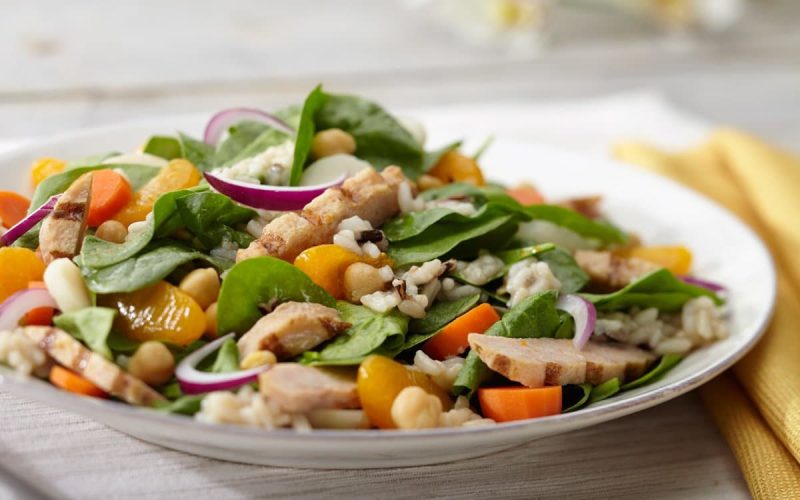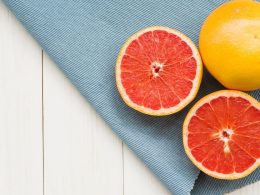For a long time now, the Health Management Resources (HMR) Diet has been ranked as one of the best short-term diets for weight loss on the market. The HMR diet has become popular among dieters looking for a fast and convenient way to shed extra weight.
It is needless to say that we are not shocked at the speed with which it garnered attention, considering how it requires almost no effort and relies mainly on pre-packaged products as a substitute for high-calorie foods.
However, there have been concerns raised by many on the effectiveness, safety, and ability to promote permanent weight loss and maintenance.
Here, we run an in-depth review of the HMR diet, as well as its pros and cons.
What Is the HMR Diet?
The HMR Diet is a feeding plan for weight loss that replaces regular foods in a person’s diet with pre-packaged entrees, snacks, and shakes to reduce calories and support weight loss.
This diet plan is shared into two phases — a phase for weight loss, followed by a phase for weight maintenance.
During the first phase of this diet, it is recommended that participants consume HMR products strictly together with extra servings of fresh fruits and vegetables.
It works with a “3+2+5 plan,” and it involves eating no less than three of the HMR shakes, two of the HMR entrees, and five servings of vegetables and fruits each day.
During the diet’s second phase, participants can feed on regular foods as they are slowly reintroduced and eaten alongside two HMR products a day.
Some plans also involve support from medical supervisors, online health coaches, and in-person meetings, depending on the participant’s location.
Does It Work for Weight Loss?
The HMR Diet is one that requires very low calories. Each meal under this diet plan provides less than 300 calories, and shakes contain 100–160 calories.
Eating very few calories than you burn is crucial to losing weight. Therefore, reducing your intake of calories by following the HMR Diet may be beneficial if your goal is weight loss.
The feeding plan also challenges dieters to expend at least 2,000 calories weekly through physical activity, as it may help to increase weight loss more.
Additionally, it has been demonstrated by many studies that meal replacements can lead to significant weight loss.
A 40-week study carried out in 90 people revealed that those who followed a meal replacement program were able to lose more weight than people who are on a food-based diet.
The HMR diet is one that also supports eating fruits and vegetables, which have very low caloric content but contains high amounts of micronutrients and fiber that will help you feel fuller for longer.
Other Benefits of the HMR Diet
The HMR Diet is one that is easy to follow since the meals are pre-packaged and delivered directly to you, and it requires very little cooking or meal planning.
This is great as it can save you both time and energy and also negates the need to track, weigh or measure carbs, calories or portion sizes meticulously.
Plus, since the feeding plan is a pre-planned and pre-portioned one, it makes it much straightforward to meet your daily nutritional needs and also fill in all gaps in your diet by providing the necessary vitamins and minerals that are needed by your body.
Additionally, meal replacement programs can also offer health benefits that go beyond losing excess weight.
Potential Downsides of HMR Diet
The HMR Diet is a very restrictive diet, and feeding on non-HMR foods is not encouraged during the first phase of the feeding plan until you achieve your desired weight loss.
Therefore, over time, the diet may become repetitive and can trigger a feeling of deprivation, which may cause an increased risk of overeating.
The diet is also one that may be difficult to sustain in the long run and can get quite expensive, with starter plans taking off at $189 for a supply of three weeks— not including extra foods, like fruits and vegetables.
Plus, the plan is one that is very low in calories and may not give some people enough for the calories they need, especially people who are very active or have increased calorie needs.
While it is important to cut calories if you are trying to lose weight, decreasing your intake of calories too much may have a negative effect on health.
A very-low-calorie diet may lower your metabolism and also increase your risk fertility issues, problems of bone loss, and immunity issues.
Following through with the HMR Diet for a long period of time without making ant adjustments to your activity levels or diet may increase your risk of any of the adverse effects.
However, supplementing with some extra snacks or small servings of fruits and vegetables as required is a simple way to up your intake of calories and ensure that you are meeting your needs.
Foods to Eat while on an HMR diet
During the first phase of the HMR diet plan, you are advised to only feed on HMR products, which include the HMR pre-packaged entrees, soups, shakes, and bars.
The only foods you are allowed to include during this phase are fresh fruits and vegetables.
It is recommended that you consume at least three of the HMR shakes, two of the HMR entrees, and as much as five servings of fresh vegetables and fruit daily.
Once you stick to this diet and have reached your weight loss goal, it is ok to transition to the next phase, which allows a greater variety of normal foods.
During this phase, you should still have to eat about two of the pre-packaged HMR products daily but may also introduce some additional meals.
Below are some of the foods that you can be included on this diet:
- HMR entrees, shakes, and snacks
- Fruits: Blueberries, apples, peaches, bananas, apricots, strawberries, blackberries, etc.
- Vegetables: Potatoes, asparagus, cauliflower, broccoli, bell peppers, mushrooms, etc.
- Red meat: Opt for lean cuts of beef, lamb, pork, etc. (during the 2nd phase)
- Poultry: Skinless turkey, chicken, etc. (during the 2nd phase)
- Fish: Tuna, salmon, codfish, Pollock, flounder, etc. (during the 2nd phase)
- Whole grains: Barley, oats, quinoa, brown rice, buckwheat, etc. (during the 2nd phase)
- Legumes: Chickpeas, beans, lentils, peas, (during the 2nd phase)
Foods to Avoid while on the HMR diet
Though non-HMR foods apart from fresh fruits and veggies can be slowly added while on the maintenance phase, it is quite recommended that you stick to low-calorie options and minimize high-calorie or high-fat foods.
Below are some of the foods that you should avoid in both phases of this diet:
- Red-meat products: pork, hamburger, cold cuts, bacon, sausage, etc.
- Full-fat dairy: Cheese, ice cream, frozen yogurt, sweetened yogurt, etc.
- Beverages: Soda, alcohol, fruit juice, etc.
- Condiments: Cream cheese, sugar, butter, high-fat gravy, salad dressing, peanut butter, mayonnaise, etc.
- Prepared foods: Chips, baked goods, fried foods, pizza, pretzels, fast food, french fries, etc.
A Sample Meal Plan To Try
Below is a one-week meal plan you can try. This plan highlights a few of the options for the first phase of the HMR Diet:
Monday
- Breakfast: 150 grams of strawberries and HMR Multigrain Hot Cereal
- Snack: HMR 500 Vanilla Shake
- Lunch: 140 grams of butternut squash and HMR Vegetable Stew with 1 cup
- Snack: HMR 120 Chocolate Shake and 1 cup (about 170 grams) of mixed fruit
- Dinner: 240 grams of carrots and HMR Pasta Fagioli
- Snack: HMR 800 Chocolate Shake
Tuesday
- Breakfast: 150 grams of bananas and HMR 800 Chocolate Shake
- Snack: 240 grams of fruit salad and HMR 500 Chocolate Shake
- Lunch: 80 grams of eggplant and HMR Lasagna
- Snack: HMR 120 Vanilla Shake
- Dinner: 140 grams of cabbage slaw and HMR Chicken Enchiladas
Wednesday
- Breakfast: 120 grams of raspberries and HMR 120 Vanilla Shake
- Snack: 150 grams of strawberry and HMR 800 Chocolate Shake
- Lunch: 90 grams of broccoli and HMR Mushroom Risotto
- Snack: HMR 120 Vanilla Shake
- Dinner: 300 grams of mixed vegetables and HMR Savory Chicken
Thursday
- Breakfast: 150 grams of blueberries and HMR Multigrain Hot Cereal
- Snack: One apple with HMR 120 Vanilla Shake
- Lunch: 300 grams of tomatoes of HMR Turkey Chili
- Snack: HMR 500 Vanilla Shake
- Dinner: 110 grams of summer squash and HMR Penne Pasta with Meatballs
- Snack: HMR 800 Chocolate Shake
Friday
- Breakfast: 145 grams of blackberries and HMR 500 Chocolate Shake
- Snack: HMR 800 Vanilla Shake
- Lunch: 270 grams of asparagus and HMR Rotini Chicken Alfredo
- Snack: HMR 500 Chocolate Shake with one banana
- Dinner: 145 grams of peas and HMR Beef Stroganoff
Saturday
- Breakfast: 150 grams of peaches and Multigrain Hot Cereal
- Snack: HMR 120 Chocolate Shake
- Lunch: 100 grams of cauliflower and HMR Lentil Stew
- Snack: 150 grams of strawberries and HMR 500 Vanilla Shake
- Dinner: 140 grams of mushrooms and HMR Chicken Pasta Parmesan
- Snack: HMR 120 Chocolate Shake
Sunday
- Breakfast: 155 grams of apricots and HMR 120 Vanilla Shake
- Snack: HMR 800 Vanilla Shake
- Lunch: 60 grams of spinach and HMR Cheese and Basil Ravioli
- Snack: HMR 500 Chocolate Shake
- Dinner: 110 grams of green beans and HMR Barbecue Chicken
We hope that you find this article useful. Leave a comment below.










